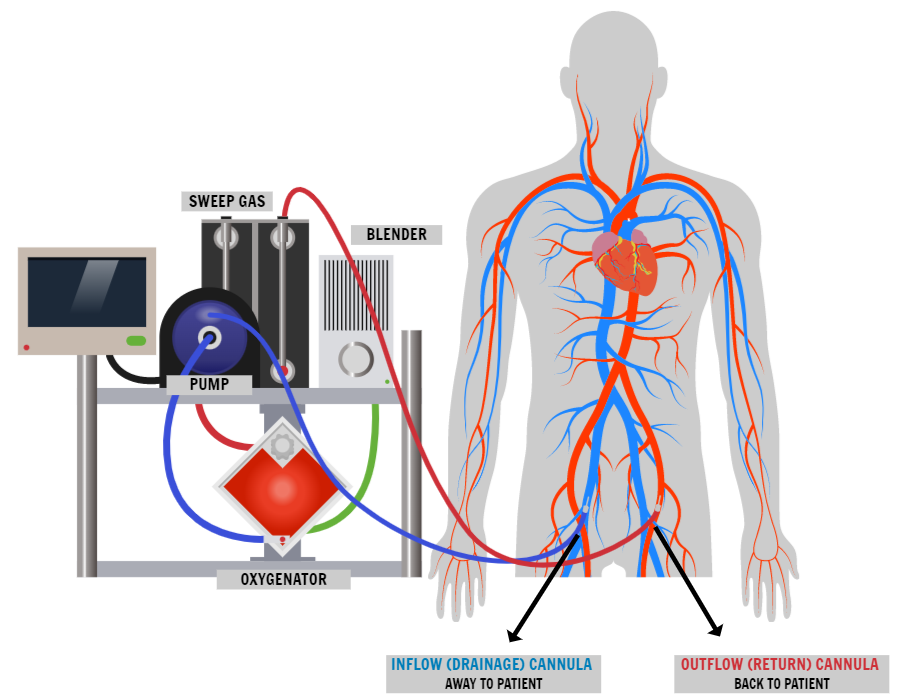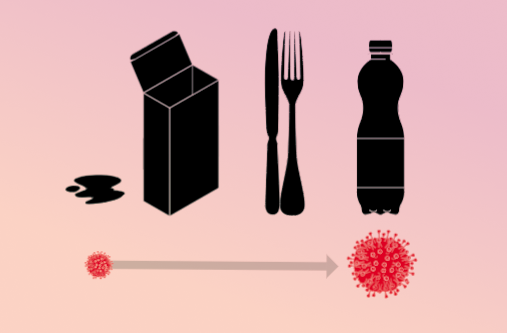Extracorporeal membrane oxygenation, also known as ECMO, is utilized in critical care conditions when your heart and lungs require assistance for the body to recuperate.
An ECMO machine is similar to the heart-lung by-pass machine used in open-heart surgery and involves pumping blood from outside the body to a heart-lung, which eliminates carbon dioxide and returns oxygenated blood to the body’s tissues. Blood passes from the right side of the heart to the heart-lung machine’s membrane oxygenator, where it is rewarmed and returned to the body. This machine allows the heart and lungs to rest and recover.
There are two kinds of ECMO: VV ECMO and VA ECMO. In this article, you will learn more about VA ECMO and how to distinguish between the two types.
What is a VA ECMO and how does it work?
A veno-arterial ECMO, or VA ECMO, is a machine used to enable the majority of the patient’s blood to travel through the circuit without passing through the heart. This kind of ECMO transfers blood from a large vein to remove unoxygenated blood from the body to a large artery, enabling oxygenated blood to flow throughout the body even when the heart is too frail to pump it.
It can be introduced by peripheral or central access and is typically applied in the operating room to give short-term assistance, particularly in postcardiotomy patients who have been unable to extricate from the cardiopulmonary bypass. The heart will continue to beat while on VA ECMO, but its job will be made much easier because the ECMO machine will conduct the majority of the pumping.

Types of ECMO
In addition to VA ECMO, there is VV ECMO and both are quite similar. Veno-venous ECMO removes and returns blood to the venous circulation at the same time. Access is typically gained via a singular Y-shaped cannula put into the internal jugular vein in the neck, which allows blood to leave and return to the body in one location, requiring only one entry site rather than two. However, in certain cases, numerous single lumen cannula may be introduced into the neck and/or groins.
Only the lungs are supported by VV ECMO, the patient’s heart must still operate adequately to satisfy the demands of the body.
Main differences between VA ECMO and VV ECMO
- VV ECMO exclusively supports the lungs, whereas VA ECMO supports both the lungs and the heart
- Both ECMOs drain blood from the right atrium, but VA returns it via the inferior or superior vena cava, whilst VV returns it via the femoral artery, subclavian artery, or carotid artery
- VA ECMO patients are more likely to get air emboli and bleeding, whereas VV patients are less likely to experience these problems.
- VA ECMO can be used for right ventricular failure, while VV can’t be used
- VV ECMO has higher perforations rates and VA lower
- With the use of VA ECMO higher PaO2 is achieved, compared to VV ECMO
Who needs ECMO?
Overall, ECMO is a type of life support that is available to anybody, including infants, children, and adults, who have life-threatening heart and/or lung conditions, such as:
- Pulmonary embolism
- Cardiac arrest
- Hypercapnic respiratory failure with an arterial pH of less than 7.20
- Postcardiotomy patients who have been unable to extricate from the cardiopulmonary bypass
- As a step toward cardiac or lung transplantation or the implantation of a ventricular assist device
- Heart muscle disease (decompensated cardiomyopathy)
- Inflammation of the heart muscle (myocarditis)
- Acute respiratory distress syndrome
- Trauma
- Life-threatening infection reaction (sepsis)
Risks and complications
Hemorrhage
The most prevalent ECMO consequence is hemorrhage. This is due to heparin being fed into the ECMO circuit to prevent blood clots from developing. Heparin accomplishes this by thinning the blood, making clots less prone to form. Typically, bleeding occurs at ECMO cannula locations or other surgical locations on the body. However, while a patient is taking heparin, bleeding can occur anywhere in the body. The most serious bleeding can occur in or near the brain. As a result, the ECMO team is continually watching for and analyzing symptoms of bleeding.
Circuit failure or rupture
It is common to observe a circuit break or rupture; in this situation, professionals are trained to respond immediately to rectify the problem. Before repairing or replacing the ECMO machine, the patient must be removed from it. During this period, the patient will be cared for until ECMO can be resumed.
Blood clots or air bubbles entering the circuit
The team takes every precaution to keep clots or air from reaching the patient, which might result in catastrophic harm to the brain or lungs known as an embolism. A “bubble detector,” which may be included on some circuits, is a safety device that shuts the circuit when a bubble is “spotted” within the tube. The ECMO specialist can then remove the air before it affects the patient.
Your scientific Illustrations on-point
Use an incredible tool to add infographics with relevant data to your work, enhancing it with high-quality and essential visual elements. Mind The Graph was created to help the scientific community by providing several easy-to-use infographic templates.

Subscribe to our newsletter
Exclusive high quality content about effective visual
communication in science.




